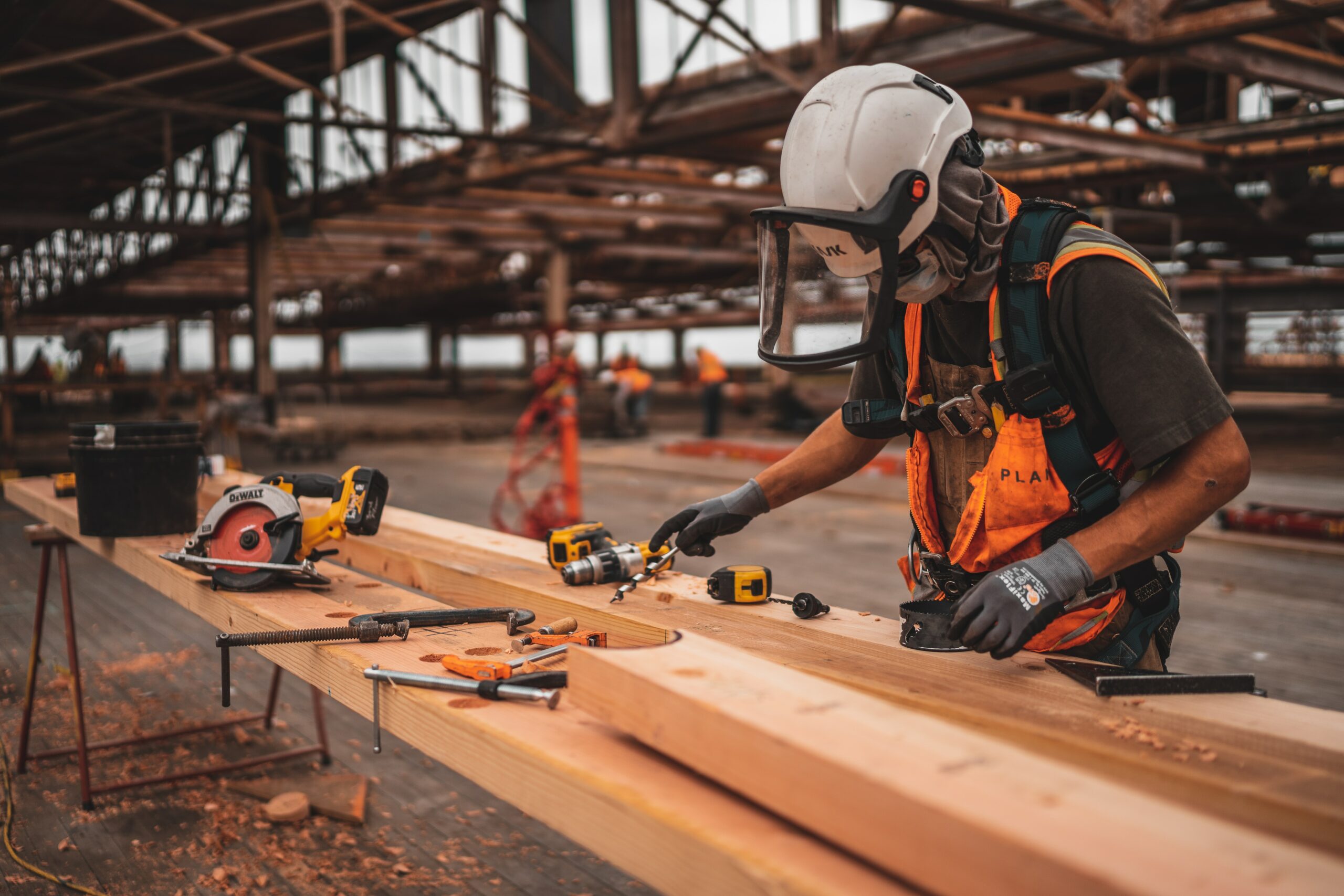The construction industry is responsible for building, maintaining, and repairing various structures, including buildings, roads, bridges, and utility systems. This sector is critical to the US economy as it ensures the safety and well-being of communities by keeping residential areas, commercial facilities, and local infrastructure in good condition. Despite facing challenges due to changing consumer behaviors, material procurement issues, and project delays amid the COVID-19 pandemic, the construction industry has continued to support economic growth. In 2022, the sector experienced approximately $1 trillion in total gains, representing a 17% increase from the previous year.
Looking ahead, experts predict a slowdown in growth due to higher interest rates limiting property owners’ ability to invest in new construction projects, especially in the residential sector. However, recent federal initiatives like the Infrastructure Investment and Jobs Act and the CHIPS and Science Act aim to support economic stability in the construction industry by funding future projects, especially in the commercial segment. Nonetheless, the industry faces several trends that could cause concern in the coming months and years, such as labor shortages, material challenges, economic issues, and technology shifts. Therefore, it is essential for construction businesses to monitor the latest industry developments and adjust their risk management practices accordingly.
Labor Shortages
In recent years, labor shortages have plagued various industries, and the pandemic has only worsened the situation as employees reevaluate their job expectations. The construction sector is no exception to this trend. According to the Associated Builders and Contractors, the industry currently faces a shortage of 650,000 workers. A recent study by FMI Corporation also found that 89% of construction firms consider labor scarcity their top operational challenge. Moreover, an increasing number of construction workers are nearing retirement, which compounds the labor shortage problem. The US Bureau of Labor Statistics reports that 1 in 5 construction workers are aged 55 or older. This shortage of workers may lead construction businesses to hire more inexperienced employees, which can increase worksite accidents, insurance claim frequency and severity, project delays, and operational expenses.
To combat labor shortages, construction businesses must invest in measures to attract and retain qualified talent. These measures may include outreach efforts at community events, such as high school job fairs and trade school forums, to encourage a new generation of construction workers. Upskilling and reskilling initiatives can also educate existing employees and enhance their professional abilities. Additionally, providing ongoing safety training to workers of all ages and experience levels can help prevent worksite accidents. Offering competitive wages and benefits packages, flexible arrangements, and career advancement options may also attract and retain workers, including those who have left the industry. Furthermore, construction companies can explore unrepresented demographics, such as women, veterans, and formerly incarcerated individuals, who can provide evidence of rehabilitation and expand the talent pool. Women, for instance, account for just 11% of the construction workforce, highlighting substantial recruitment opportunities within the sector.
Material Challenges
The construction industry has encountered widespread material challenges in recent years, largely due to supply chain disruptions. The COVID-19 pandemic, transportation bottlenecks, and geopolitical uncertainties have resulted in erratic demand for numerous building materials, causing significant project delays and driving up operational costs. The National Roofing Contractors Association reports that total construction material costs increased by over 17% between 2021 and 2022, with materials like steel, iron, and lumber seeing the highest price hikes. Lumber costs, in particular, have fluctuated between $500 and $1,500 per 1,000 board feet since the pandemic began. The Associated General Contractors of America found that nearly 73% of construction firms listed rising material expenses as a significant concern for the coming year.
Experts predict that material challenges will persist in the construction industry, impacting lead times and project profitability. To minimize their impact, construction companies can consider increasing supply chain resiliency, revising inventory management protocols, and adjusting bidding strategies. Some strategies include pre-ordering materials and storing them securely, working with local suppliers for timely deliveries, building strong relationships with suppliers for prioritized access to high-demand materials, having contingency agreements with multiple suppliers for the same materials, and renegotiating contract clauses with stakeholders to limit financial consequences of supply chain disruptions. Additionally, construction companies can reassess project pricing models to protect profit margins.
Economic Issues
The construction industry, like many others, has been impacted by inflation concerns in recent years, leading to significant cost increases for goods and services. This has been exacerbated by rising material costs, which have put pressure on project profitability, prompting some companies to raise their prices. The Federal Reserve (Fed) has been increasing interest rates to combat inflation, with some experts predicting that it will start to subside in 2023. However, other factors such as the continued labor market challenges and rising interest rates could lead to a recession in the United States.
During a recession, demand for construction services could decrease, leading to a reduction in economic activity and potentially forcing companies to make difficult financial decisions. To prepare for a potential recession, construction businesses should establish strong financial plans, scale back non-essential operations, maintain steady cash flow, manage debt effectively, build strong relationships with stakeholders, and implement effective marketing strategies. Additionally, it is essential to maintain ample insurance coverage and secure financial protection against potential losses.
Technology Shifts
To boost productivity levels, combat labor shortages, promote employee safety, and offset elevated project expenses, some construction businesses are implementing more advanced industry technology in their operations. Robotics, artificial intelligence, and the Internet of Things (IoT) can automate certain construction tasks, improve project efficiency, and provide greater visibility of essential worksite inventory and equipment. Wearable safety technology and drones can help construction companies closely monitor their employees’ behaviors on the job and detect hazardous situations before they cause accidents or injuries.
Moreover, 3D printing can enable construction businesses to generate building components and even entire structures by layering materials such as concrete, metals, or polymers in established templates or designs. This technology minimizes the need for physical labor, allows for projects to be completed more efficiently, and promotes sustainable building practices while reducing total operational expenses. According to recent industry research, leveraging 3D printing can lead to cost savings of up to 40%.
However, it’s crucial to note that implementing advanced industry technology can also lead to elevated cyber exposures for construction businesses. For instance, IoT-based cyber incidents, such as data breaches and ransomware attacks, increased by 77% during 2022, making companies that utilize this technology increasingly vulnerable. A recent survey by IT company Forrester found that at least 75% of construction firms have experienced cyber incidents over the past year, resulting in nearly $6 trillion in losses.
To mitigate possible cyber incidents, construction businesses that leverage advanced industry technology should review their digital exposures and make adjustments such as providing enhanced employee training on common cyber threats and installing updated security software. They should also consider purchasing dedicated cyber insurance to ensure financial protection against potential incidents and related losses.
Conclusion
The construction industry faces various challenges that require proactive measures to mitigate their impact. By monitoring these trends and taking necessary steps to address associated risks, construction companies can position themselves for long-term success. For more specialized risk management guidance, please don’t hesitate to contact us.





